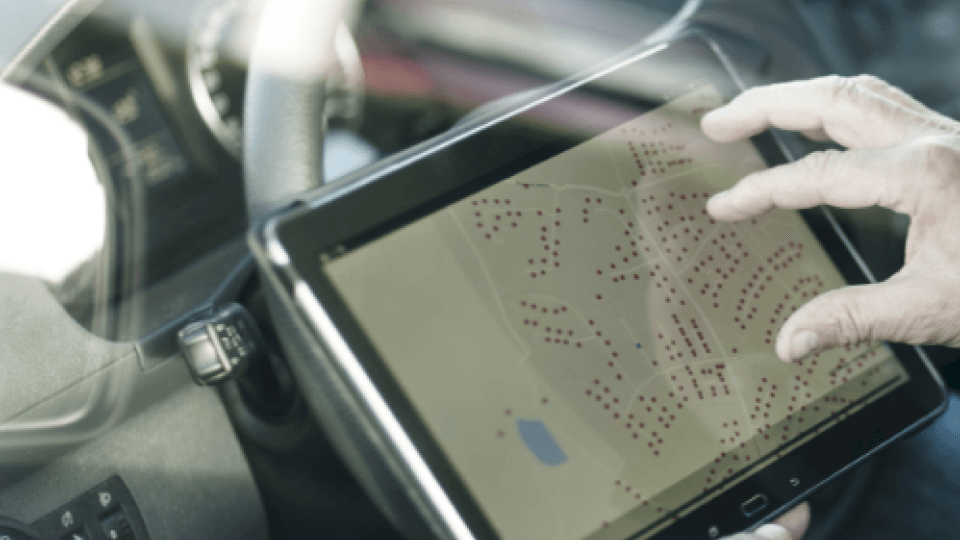A thirst for actionable insights: How water-link brings water management into the twenty-first century water-link is the main water provider for a large portion of the Antwerp province in Belgium. They produce, distribute and provide water to over 600,000 households and businesses. What makes water-link unique is that they were the first utility company in Belgium and were the first to roll out digital water meters. water-link’s water landscape requires a smart, sustainable approach to ensure continued availability. The digital meter is already making a difference for their customers and employees, as well as changing how they collaborate with their stakeholders and society in general, making them pioneers in Flanders.
The challenge
Since 2018, water-link has been installing smart digital water meters in almost all their connected households. With over 200,000 currently in the field, these meters provide real-time data on water consumption, pressure, temperature, leakage, reverse flows and more. Taken together, this data enables more efficient and accurate billing and allows water-link operators to monitor usage patterns and spot abnormalities. In this way, the data (e.g., about temperature and pressure) also helps to detect reverse flows and protect against contamination. The digital meters even allow water-link to close valves remotely in case of emergencies.
However, to take full advantage of all the possibilities, water-link had to find a way to capture and centralize that stream of data and transform it to integrate with a wide range of internal and external platforms. This would enable water-link to reduce operational costs in various ways — for example, by automating maintenance signals, enabling automatic move procedures without any water loss between contracts, and detecting leakage and theft.
The solution
Integrating data from hundreds of thousands of digital meters, transforming it into a consistent format, enriching the set with other data streams and delivering insights to various destinations? Sounds like a job for a data integration platform. “Like an air traffic control tower, the data integration platform brokers information between applications in real time, orchestrates data movements, validates incoming data and much more,” says Maarten Herthoge, Project Manager for water-link and Databricks Champion at delaware. “It also makes it possible to serve data to other internal and external parties.”
water-link turned to delaware, a Databricks consulting partner, which proposed a setup consisting of a central data hub, leveraging Databricks, that feeds into multiple use cases and serves different internal and external audiences and systems. “Everything runs on Microsoft Azure, with a heavy focus on lakehouse concepts and Databricks,” Herthoge explains. “We also use tools like Power BI, Event Hub, Functions and others to consume and serve data.”
In the back end, everything is powered seamlessly by the Databricks ecosystem. Job clusters are connected to Azure Event Hubs to ingest the various data streams. These streams are enriched with asset and customer data to push the right signals toward operational processes and teams. Additionally, water-link relies heavily on Databricks SQL warehouses and Delta Lake to democratize data access and consumption throughout their organization. SQL warehouses provide an easy-to-use single entry point for water-link’s data needs, whether their service desk wants to perform ad hoc analytics or ops wants to give more autonomy to field service workers by enabling them with ready-made insights.
The result
With just a handful of components, the joint water-link/delaware project team managed to tackle more than 20 use cases that directly impact water-link’s business users throughout the whole organization, including employees in customer administration, service desk workers and field service operators.
Thanks to the Azure Functions integration bridging the Databricks Data Intelligence Platform toward a SAP integration stack, users can trigger process flows in the ERP directly from a Power BI report. Service desk employees have access to a 360-degree cockpit that offers immediate user insights and allows them to assist more efficiently.
The business rule engine allows the data integration platform to prioritize and act on hundreds of thousands of alerts without the need for human intervention every day. These actions range from having someone in the call center contact the customer, to immediately dispatching a field service team for serious issues (major leaks, contamination, theft, etc.). Before, only a dozen alerts could be handled daily. Now, automated data quality control on all asset information enables quick detection of issues and tampering.
The API layer is built according to the OpenAPI Specifications (OAS), which enables internal and, in the future, external sharing of data for smart city initiatives. The meter portal provides consumers with full insights into their own data and how it is used with the meter portal, in complete alignment with the General Data Protection Regulation. 24/7 monitoring of household installations helps prevent major damage or leaks for users.
